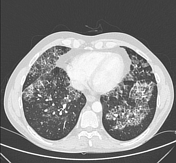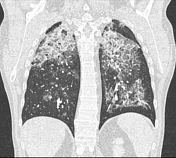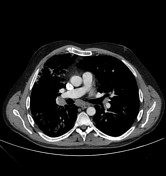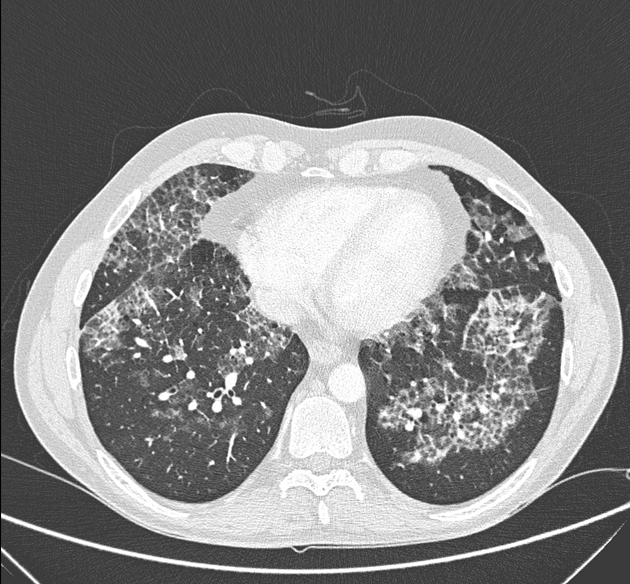Presentation
A smoker patient with a two-year history of progressive dyspnea that presented with dry cough and mild fever since five days.
Patient Data







Bilateral areas of "crazy-paving" in a random distribution, that tend to be more consolidative in the upper right lobe and the apical portion of the lower left lobe. Subpleural sparing pattern in the lower left lobe (better seen in the coronal projection) and some traction bronchiectasis can be observed.
There is also associated mediastinal and hilar adenopathy.
Case Discussion
The "crazy-paving" pattern raises a broad differential diagnosis. In this patient, due to the prolonged evolution of the symptoms and the absence of relevant clinical history, except for the smoking habit, two diagnostic possibilities were considered:
Pulmonary alveolar proteinosis: this was the first option because of the suggestive radiological pattern and the compatible symptomatology, although the finding of lymphadenopathy was not typical.
Lepidic-predominant adenocarcinoma of the lung: this uncommon pattern has been described in the infiltrative form of this tumor, which can be supported by the presence of the consolidation areas and adenopathies.
Finally, bronchoalveolar lavage was performed in this patient, and the results showed: "Microscopic extensions with alveolar macrophages and lymphocytes, scarce neutrophils and some bronchial cells without atypia. Presence of granular proteinaceous material (Periodic Acid Shiff -PAS-positive) in keeping with pulmonary alveolar proteinosis."
Retrospectively, the presence of lymphadenopathy and the consolidative pulmonary areas, in addition to the mild fever and the low leukocytosis, were attributed to a concomitant alveolar infection. Pulmonary alveolar proteinosis predisposes patients to infection.
This case is submitted in collaboration with Dra. Noemí Cañete.




 Unable to process the form. Check for errors and try again.
Unable to process the form. Check for errors and try again.